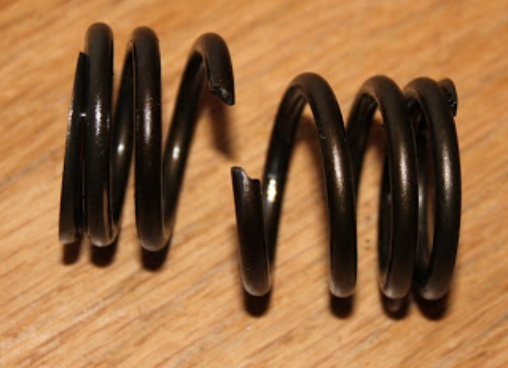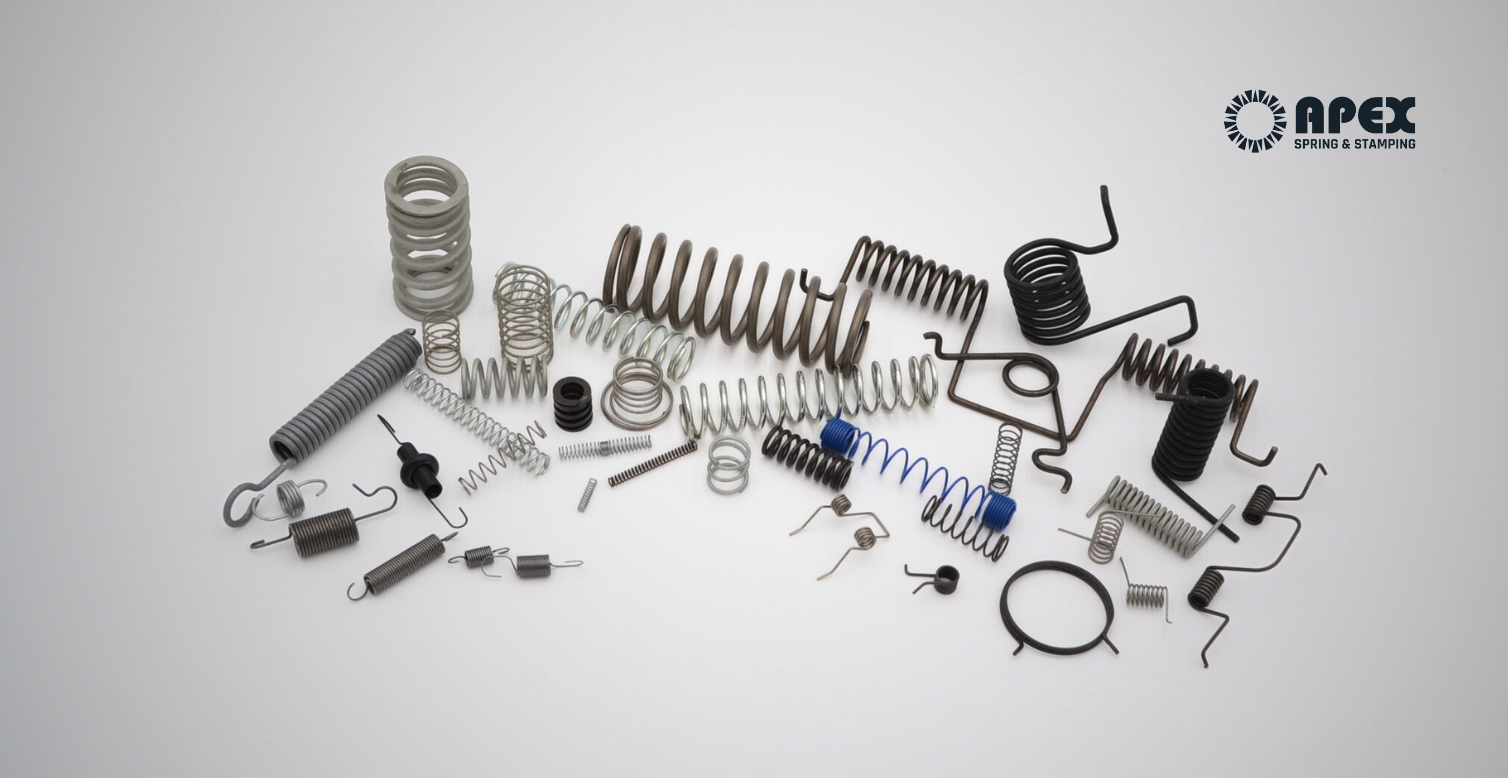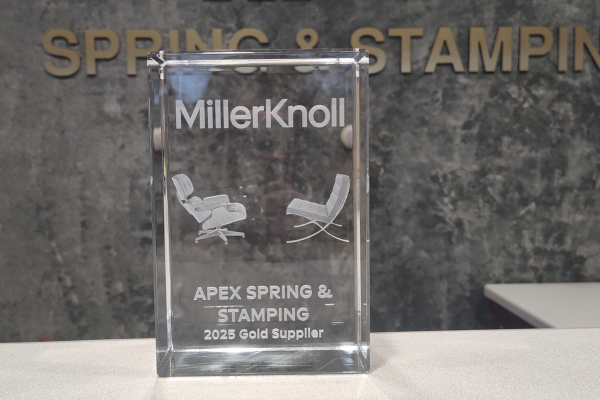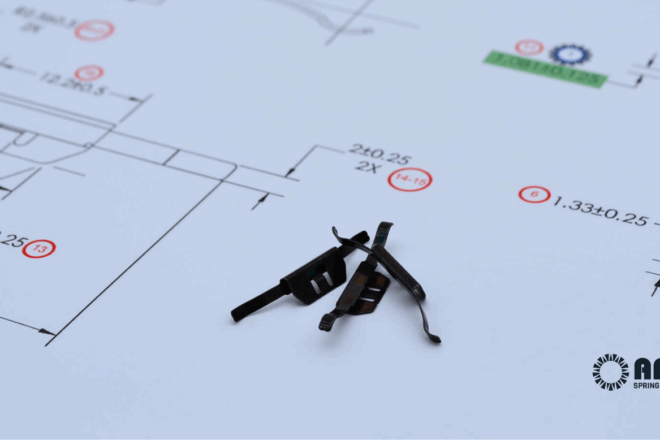Spring failure is not only inconvenient and expensive but it can also be detrimental. Therefore, avoiding spring failure is essential, this is something the team at Apex understands and takes seriously. Springs are a vital component that allows for millions of consumer products, automotive parts, furniture designs and more, to become a reality. Therefore, for OEMs, understanding spring applications can be the key to a successfully avoiding failure. It is vital a designer and manufacture understand exactly how springs work, and why they fail. Let’s dig into some of the most common reason for failure, and how Apex approaches avoiding those scenarios.
#1. Non-Calculated Spring Stress
First, let’s talk about how to calculate spring stress. At Apex, spring stress is calculated using a specialized SMI software. If the max stress of the spring, in it’s working condition, exceeds the yield strength of the material, there is a high likelihood that the spring will fail. Two things happen when this occurs. The spring will take a set and not return to its original free position, or manufactured position. Through cyclical loading the spring will have a catastrophic failure and actually break.
It’s important to have an expert do an evaluation of the stress of your spring. Apex Spring and Stamping’s team is fully equipped with experience and the software to indicate the full life cycle of the part based on these calculations. We use a modified goodman diagram for stress analysis. The percentage of the minimum tensile strength is a good indicator that you have a good design. So if you are unsure, don’t stress, we can help!
#2. Incorrect Material Choice
When you select a material, there are many factors that need to be considered. The key to this is getting as much information as possible on the use of the product. The use of the part and the industry that the parts goes to will tell all on what material needs to be selected. Using the wrong material in the wrong application can create a disaster out in the field, and many failures and headaches.
Example: Using a lower quality wire where the application demands superior performance or using hard drawn wire where Music wire is a better choice.
- Automotive Application
- Medical Application
- AeroSpace Application
- Defense Application
- Consumer Application
- Engine Application
- Electrical Application
By simply selecting one of these options is the first step to understanding the use of your product.
#3. Incorrect Finish Selection
Poor finish selection is another area that can lead a spring to failure. This is another area where we need to evaluate the use of the product, but specifically looking at its environment. What are the environments that the part is going to be going into?

Example: For interior center consoles in the auto industry, they have a “Coke” test. This test simulates a Coke spilling within the automobile and tests its durability in the process. Many elements can be very corrosive to any finish. So start by asking, is the part going to be used inside a vehicle, or outside a vehicle?
One of the finishes we do for automotive is evaluated by something we call the gravelometer test. This is where we throw simulated gravel at the part to see how long the adhesion of the finish will last. This is a tedious and extreme process, but it defines the quality of a product.
What happens is the surface finish will break down either through cyclical testing, or salt spray testing, and the base metal will start to rust. Failure of spring is typically on the surface of the part, so this will limit the actual life of a spring when it’s rusted. At Apex Spring and Stamping, we have the ability and option to put many different types of finishes on a part. Our team will gladly help you walk through the details of your project to identify what finish is right for your application.
#4. Undefined Cycle Life
There are two very important questions that need to be asked: what is the expected life cycle of the spring and is it infinite or is it a static load that never cycles?
These questions determine the amount of stress that needs to be calculated to ensure the tested spring passes or exceeds the qualifying standards. And because some applications can have very limited life cycle testing, it’s crucial to the success of the spring.
Example: Center console hinge springs in automobiles are relatively low, valve springs are infinite, and office furniture chair controls can last the life of the chair. Every industry has standards, and you need to know what they are. The more information you get, the better off you will be.
#5. Undefined Working Temperature
The operating temperature of the environment makes a large difference in what material should be selected. How hot is hot? Inside a car at desert temperatures can elevate the temperature quite high, or is the part in an application where heat is applied to the assembly at elevated temperatures. Please refer to the previous blog post on heat.
#6. Inferior Manufacturing Processes
Quality, Quality, Quality. The mantra of all industries in the US. But, is quality free? The answer is no, it is not. Apex invests in many ways to ensure quality in our manufacturing.
As a spring manufacturer, our processes are always under strict scrutiny every day for any manufacturing defects. Tooling is engineered and manufactured to precision, and any unusual or strange marking on a part from the tooling will be a liability for spring failure.
Example: Torsion spring failure mode is normally in the inside tangency of the coil body where the legs attach. If a tool mark is extreme, that is a perfect area for the beginning of a failure.
The surface condition of wire and strip is critical to the long life of a spring. Any manufacturing process that leaves unnecessary tool marks on the wire will be a potential placeholder for stress accumulation and propagation. Compression springs and extension springs, along with torsion springs are very susceptible to failure at tool marks.
Material purchased needs to be at the highest level. Apex Spring and Stamping purchases a higher caliber of spring material, to ensure the quality of parts throughout the whole manufacturing process. Parts are more dimensionally stable and actually run faster with better material. The new machines are very sensitive to bad wire, and anything with a bad cast will be found out quickly by our manufacturing team. Don’t skimp on inexpensive materials. The success of your product will be at risk.
#7. Undefined Interaction with Mating Components
Finally, the interaction between spring components and mating parts is critical for long life and performance at the highest level. How does the spring interact with stops, pins, and components that keep the spring in place? Here’s an example.
Example: Torsion springs extend in length and reduce in diameter as they are moved from their free position, to the installed position, and to full travel. If the pin diameter is too large, the torsion spring will essentially become two beam springs locked on the pin and be doomed to failure.
The Solution: Apex Can Help!
What is the best way to avoid spring failure? Work with an expert!
Apex can be your expert partner. We are passionate about springs, understanding spring applications, and how springs work. Therefore it’s standard practice for us to work with you to completely understand the application of your spring and make educated suggestions to increase the performance and life of the spring. Our experience, capabilities, tools, and programs make this process easy and painless.
Contact us today to start the conversation!
| Contact Us | Request A Quote |
Written by Tom Little, Sales Engineer at Apex Spring & Stamping




